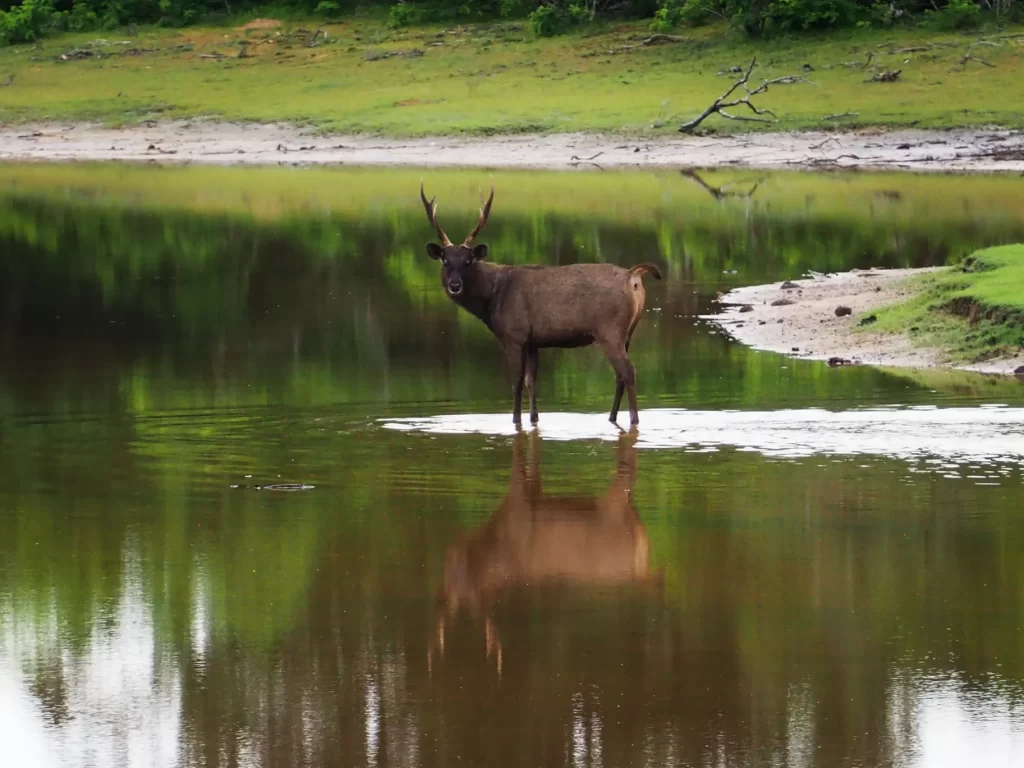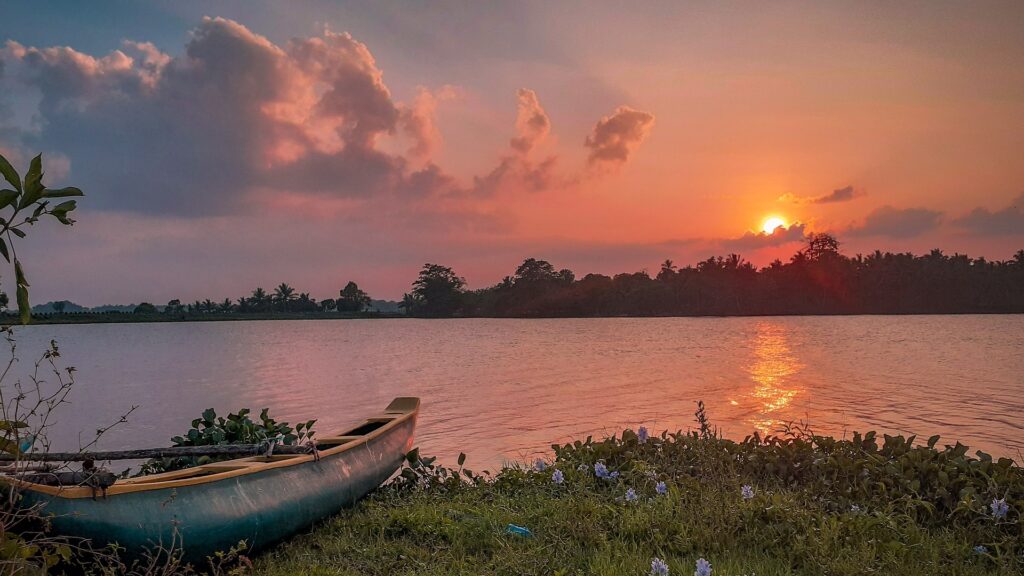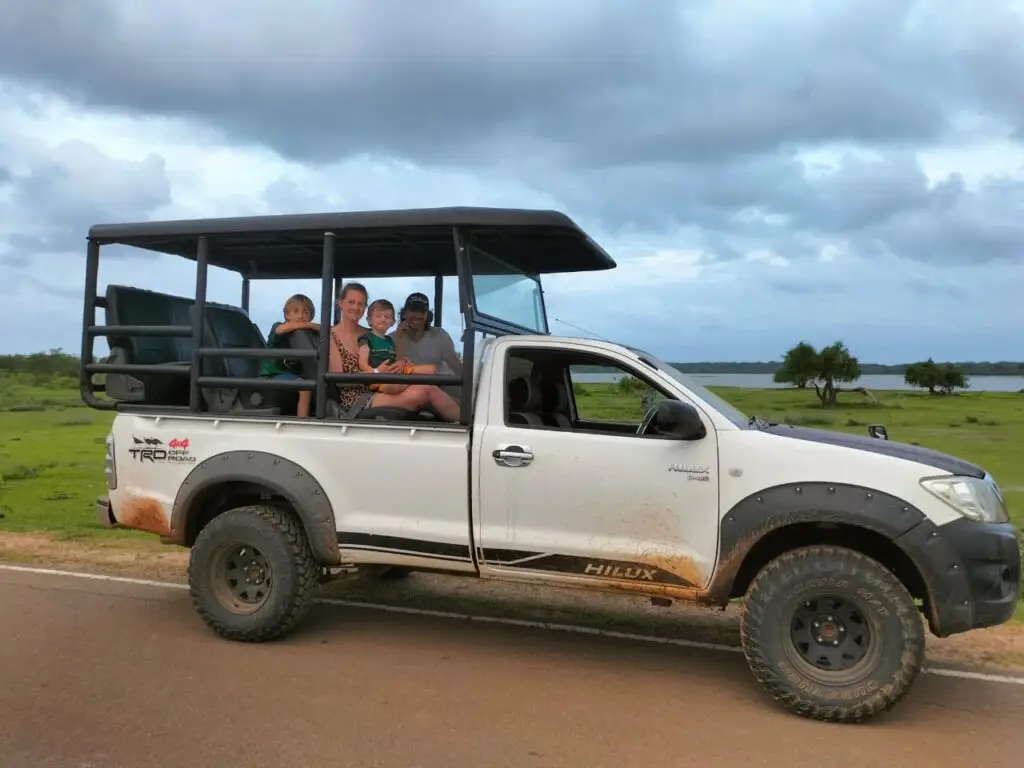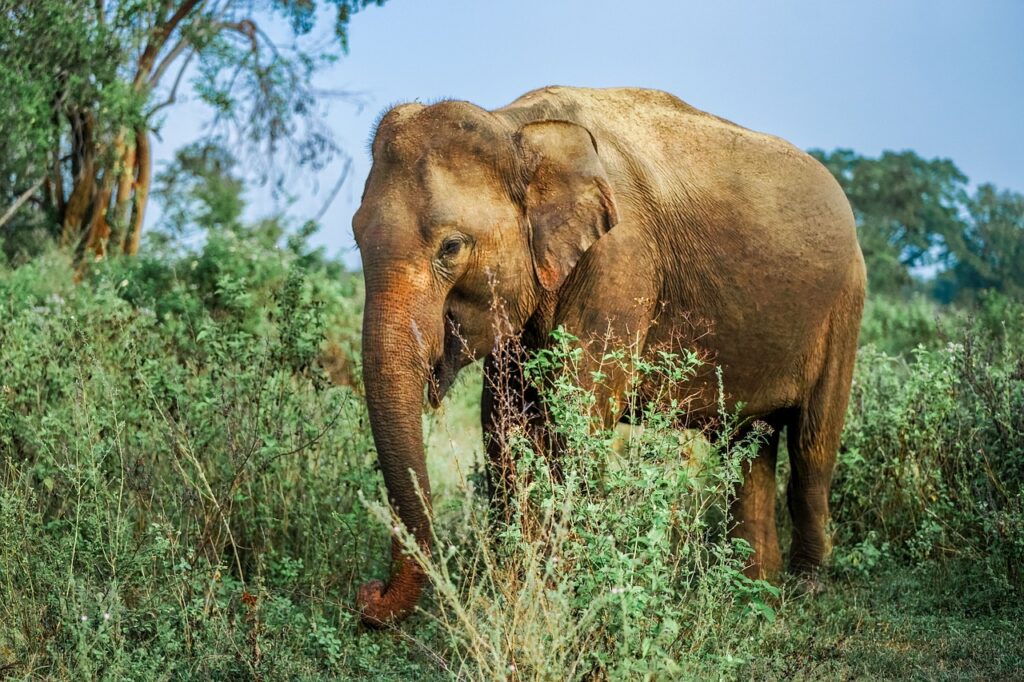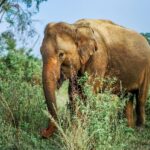Nestled in the southeast of the picturesque island of Sri Lanka lies the captivating Yala National Park, also known as Ruhuna National Park. Spanning an impressive 1,260 square kilometers and divided into five blocks, this wildlife sanctuary has rightfully earned its reputation as one of the country’s must-visit destinations.
Wildlife Extravaganza in Yala National Park Leopards, Elephants, and More..
Yala is renowned for boasting the highest density of leopards per square kilometer globally, making it a paradise for wildlife enthusiasts. Block I, the most frequented section of the park, offers a rewarding experience for those on a leopard safari. Here, elusive leopards may be spotted basking in the sun on rocky outcrops, crossing tracks, or lounging in trees. Yet, Yala isn’t just about leopards; the park is home to a diverse array of wildlife, including sloth bears, Asian elephants, deer, monkeys, and buffalo. A symphony of bird species, with around 215 varieties, adds to the park’s rich biodiversity.
A Glimpse into History: The Ancient Monastery of Sithulpawa
Beyond its natural wonders, Yala holds a piece of ancient history within its heart. The Buddhist temple Sithulpawa, situated in the park’s core, dates back an astonishing 2,000 years. Once a bustling monastery with 12,000 inhabitants, it remains a significant cultural site drawing pilgrims from across Sri Lanka. Other nearby cultural treasures include Kataragama and Magul Maha Vihara.
Journey Through Diverse Terrains: Yala’s Topography
The landscape of Yala, situated in the island’s dry zone, is characterized by scrubby bush, monsoon forests, brackish lakes, and vast granite outcrops. Along its coastal boundary, sand dunes add a unique touch. The park experiences rainfall during the north easterly monsoon, creating a lush environment in contrast to the dry season.
Embarking on Wildlife Safaris: Best Times to Visit
Yala National Park welcomes visitors year-round, but the most rewarding time for wildlife safaris is during the dry season from May to September. Early October offers a unique experience as the onset of drought enhances wildlife viewing. The north eastern monsoon brings rainfall from October to January, transforming the reserve into a green oasis. Sloth bears, feasting on palu tree fruits between May and July, make this period optimal for sightings. Early mornings and evenings are prime times for the best wildlife encounters.
Yala Unveiled: The Best of Sri Lanka’s National Parks
With its five blocks, Yala provides a variety of landscapes and wildlife encounters. Block I stands out for its unparalleled leopard density, making it a hotspot for game drives. While Chena Huts is conveniently located near the main Palutapana entrance, seasoned drivers explore off-beat areas to avoid crowds.
Choosing the Best National Park in Sri Lanka: Yala vs. Wilpattu
Sri Lanka boasts 26 national parks, each offering a unique wildlife experience. Yala and Wilpattu stand out for their variety of resident wildlife. Yala, with its dense leopard population, is globally renowned, while Wilpattu also promises strong leopard sightings. Both reserves offer opportunities to spot sloth bears and elephants. Birding enthusiasts will find Wilpattu, Yala, and Bundala particularly enticing.
Immersive Safari Experience at Dinuka Safari
Dinuka Safari offers an exceptional gateway to Yala National Park with guided game drives, in-house naturalists, and well-crafted packages. With the hotel located near Yala’s main entrance, guests enjoy seamless access to the reserve. Despite being Sri Lanka’s most popular game reserve, safari’ experienced naturalists navigate guests through lesser-visited routes, ensuring an intimate wildlife encounter.
Embark on a journey to Yala National Park and witness the untamed beauty of Sri Lanka’s most captivating wildlife sanctuary. From elusive leopards to ancient monasteries, Yala promises an unforgettable adventure for nature enthusiasts and cultural explorers alike.
